I just returned from a week in Eastern Washington to photograph the Palouse harvest and we all had a fantastic time. This area in general is a top destination for landscape photographers with the rolling hills of wheat and beans, yet most come during the spring when the landscape is hundreds of shades of lush green. Yet in August, all of that green has turned to golds and yellows as the wheat matures and is ready to harvest and its this time that can be even more rewarding, and challenging, than photographing in the Spring.
Earlier this year I was asked by a workshop attendee what 3 locations I felt were the most difficult to photograph. #1 on my list is the Hoh Rainforest as it is so challenging to simplify and create a compelling composition amidst all the incredible chaos of the forest. Tied for #2 is Death Valley and the Palouse area. Why you ask? Well, in both of these locations there often isn’t an obvious subject, something that screams “photograph me”. No waterfall, rock outcropping, sea stack, etc. In both locations, it is miles and miles of rolling landscape filled with different shapes, textures and colors. This is why it can be very challenging, the photographer needs to see beyond obvious subjects and instead compose an image using shapes, patterns, textures and colors that are pleasing to eye and creatively satisfying. However, the Palouse does offer a bit more variety than Death Valley in that there is a lot of “Americana” and farm scenes to photograph when your brain needs a break from the more challenging landscapes. When you visit the Palouse, it may take a day or two for you to adjust your vision in order to “see” in patterns/shapes/textures, so be patient with yourself and slow down to see the subtlety of the landscape.
Weather
If you visit in the late Summer to photograph the Palouse harvest, you may experience a range of weather. For the most part it will be warm, if not downright hot. 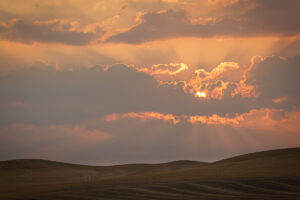 Average high temperatures will be in the 90’s with lows in the 50’s. You may even get “lucky” and have temps over 100. This area has relatively low humidity, which one one hand is nice, however it also will cause you to dehydrate faster than you might at sea level. This time of year is also prone to thunderstorms in the afternoon/evening, so be prepared! I will always bring a warm layer and rain jacket when going to the Palouse in August because you just don’t know what might happen.
Average high temperatures will be in the 90’s with lows in the 50’s. You may even get “lucky” and have temps over 100. This area has relatively low humidity, which one one hand is nice, however it also will cause you to dehydrate faster than you might at sea level. This time of year is also prone to thunderstorms in the afternoon/evening, so be prepared! I will always bring a warm layer and rain jacket when going to the Palouse in August because you just don’t know what might happen.
The other condition to be aware of during this time of year…the dust in the air! As the combines are harvesting wheat and the tiller are turning the soil, it kicks up an amazing amount of dust in to the air, both when you are close by machinery and across the vistas from Steptoe Butte. The “dirt” in the Palouse is a fine, almost like talcum powder, dirt that literally coats every belonging you have! Be cautious when changing lenses outdoors here…try to get out of the wind if you can and also bring a blower/brush for your lenses and sensor. Your camera gear WILL get dirty. As I said, this dust gets everywhere!
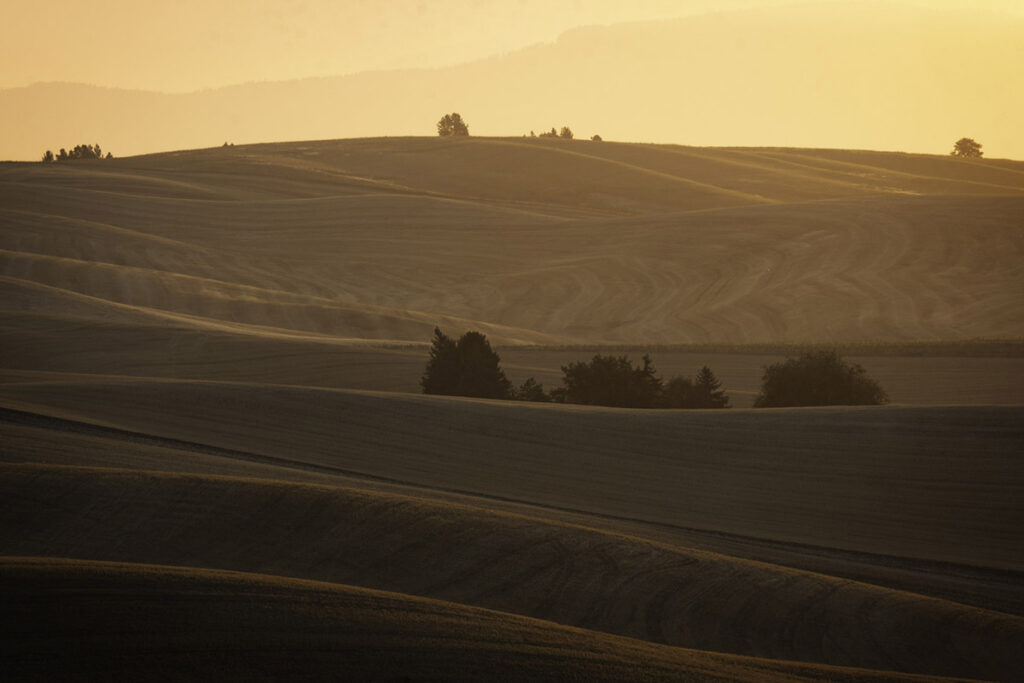
People
The people in the Palouse area are some of the nicest and giving people you will ever meet! If they see you out along the country roads they will stop and chat with you and give you some history of the local area or field that you’re near, as most likely its the landowner who has stopped. We were photographing one barn out in the country and a pickup truck pulls up and stops and it happened to be the owner of the property. He told us the history of the barn, when it was built, how the Pony Express used to own it, how there was a small town around the barn, etc etc. So very informative. In many cases, us photographers were as much of a curiosity to them as they were to us. You would think that they would be sick of photogs running all around their landscape, but they do welcome us to the area and are proud to share what they do and what they know with interested folks. Here’s the big secret though…..if you respect them and their land, they will be so accommodating. If you don’t respect private property or them as hardworking Americans, then you will not have a good experience. Too many photogs have trampled all over this area and many of the landowners are fed up with photographers disrespect, so if you visit, please be a very respectful visitor.
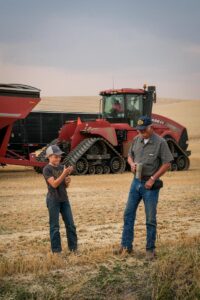 As we were stopped one evening on a dusty country road photographing the combines working a field, a semi truck pulls in to the field and the driver waves at us and then gets out of his truck to come over and talk with us. He is the father of the person who owns the land and he talked about how the whole family comes to the area during harvest to help. After about 10 minutes his grandson came running up the road and you can see them pictured here standing here talking with us. As we continued to photograph, additional farm trucks came in and the drivers all stopped to talk to say hi and pretty soon we were kind of an “attraction” for them to see and they were chatting about us on their radios (especially since a couple of folks in my group were from New York). Just to show you how generous they are, pretty soon a combine came near us and the driver got out and yelled to us and asked if we’d like to go for a ride!!!! I pushed my client towards the giant machine and watched as he climbed aboard for a memorable ride. As I was waiting and talking with his wife, (and feeling a bit jealous because I’d love a ride) a second combine swung by and invited me for a ride. I rode with the owner of the property and learned so much about how the whole wheat harvesting process, and this machine, worked. And, not to be left out, as we were harvesting one of the tender tractors pulled alongside with a trailer to offload wheat from the combine and I looked over to the cab of the tractor and saw the clients wife going for a ride in the tractor!!!! A young girl was driving the tractor and said that “the boys shouldn’t have all the fun” and grabbed her for a fantastic ride.
As we were stopped one evening on a dusty country road photographing the combines working a field, a semi truck pulls in to the field and the driver waves at us and then gets out of his truck to come over and talk with us. He is the father of the person who owns the land and he talked about how the whole family comes to the area during harvest to help. After about 10 minutes his grandson came running up the road and you can see them pictured here standing here talking with us. As we continued to photograph, additional farm trucks came in and the drivers all stopped to talk to say hi and pretty soon we were kind of an “attraction” for them to see and they were chatting about us on their radios (especially since a couple of folks in my group were from New York). Just to show you how generous they are, pretty soon a combine came near us and the driver got out and yelled to us and asked if we’d like to go for a ride!!!! I pushed my client towards the giant machine and watched as he climbed aboard for a memorable ride. As I was waiting and talking with his wife, (and feeling a bit jealous because I’d love a ride) a second combine swung by and invited me for a ride. I rode with the owner of the property and learned so much about how the whole wheat harvesting process, and this machine, worked. And, not to be left out, as we were harvesting one of the tender tractors pulled alongside with a trailer to offload wheat from the combine and I looked over to the cab of the tractor and saw the clients wife going for a ride in the tractor!!!! A young girl was driving the tractor and said that “the boys shouldn’t have all the fun” and grabbed her for a fantastic ride.
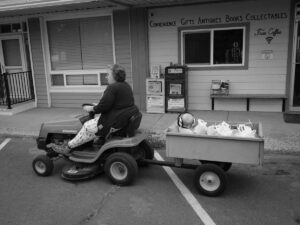
Grandmas grocery run
Later in the week, we pulled in to a small town called Garfield which is such a quaint wonderful American town. As we got out of the car, I looked down the street and saw a riding lawnmower and trailer parked in front of the grocery store. I quickly grabbed my camera and hustled down the street because I just knew there had to be a story here. As I got down to the mower, an older lady came out of the store with grocery bags and put them in the trailer. It was then I noticed a small child sitting in the trailer! Trying to be nonchalant, I struck a conversation with her and learned that her daughter had the car and car seat and she needed groceries, so she brought the mower and grandchild to town! I politely asked if I could take a picture of the child, which she allowed, and then I stuck around for their departure!
Americana
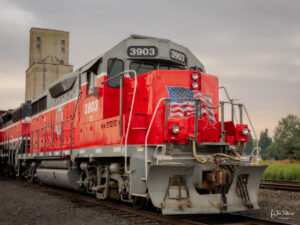
Wheat train in Garfield WA
When you visit the area to photograph the Palouse harvest, one of the big attractions is photographing quintessential rural American scenes, something we call “Americana”. You might consider yourself a landscape/nature photographer, which is great, but do not overlook some amazing scenes to photograph while you are in the area. Add some personality and color to your portfolio as well as sharpen your skills in shooting subject matter that you might not be familiar with.
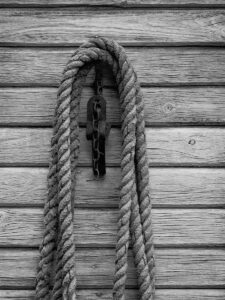
rope hanging against a wooden wall
If you’re coming from a large metropolitan area, the small towns of the area will be quite a treat to visit. Old cafes and cars line the street, the post office is a place for folks to meet and gather to discuss the days news, antique stores and old buildings all add to the ambience of the area and provide a myriad of opportunities for photography. The collection of “old time” artifacts around the towns and countryside create a picture of what life was like back in the day across most of the country.
Along with creating “american scenes”, 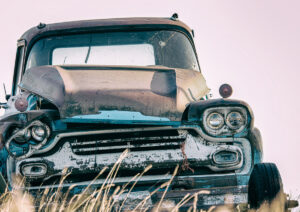 there is so much opportunity to use the shapes, textures and colors to create some fantastic abstract types of photographs. This is a place where you need to slow down and really “see” the details all around you. And, if you fancy yourself a storyteller, boy there are a lot of stories to tell here with your camera!
there is so much opportunity to use the shapes, textures and colors to create some fantastic abstract types of photographs. This is a place where you need to slow down and really “see” the details all around you. And, if you fancy yourself a storyteller, boy there are a lot of stories to tell here with your camera!
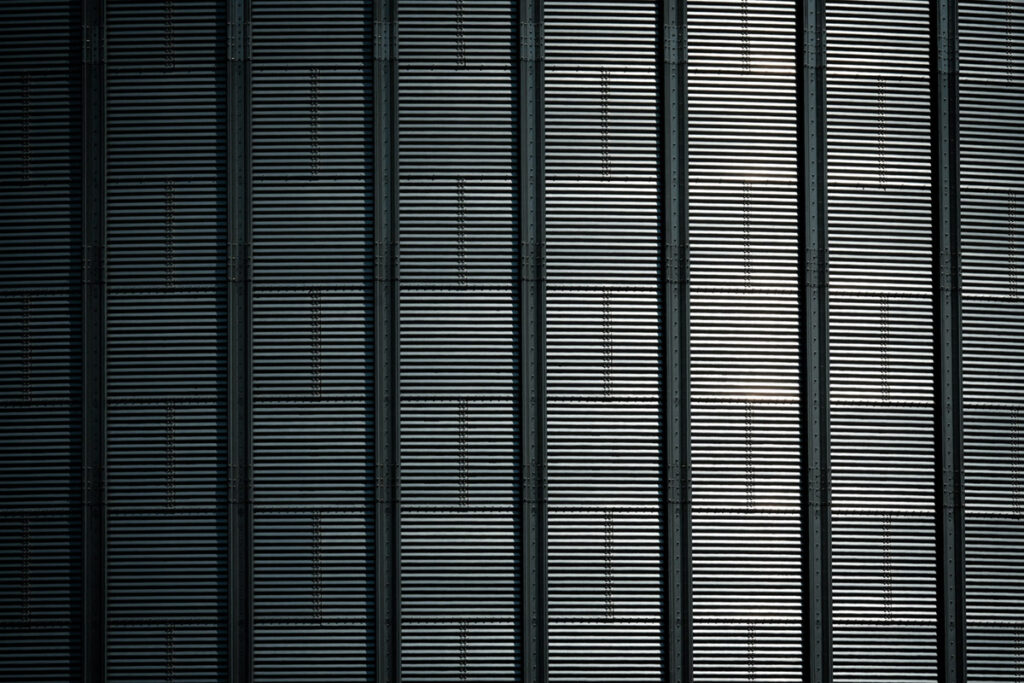
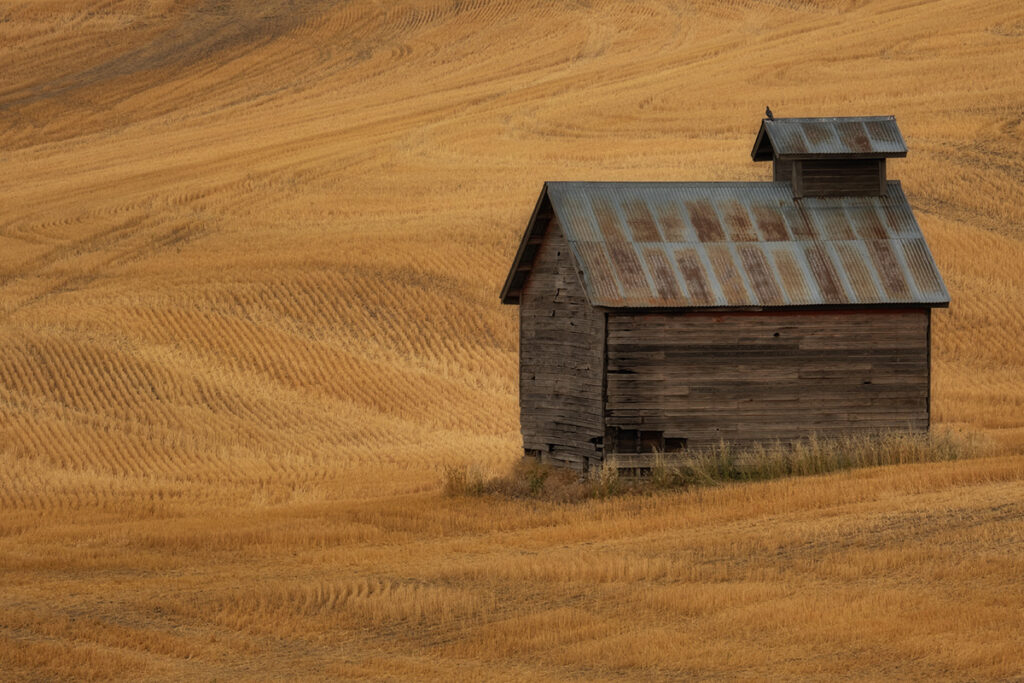
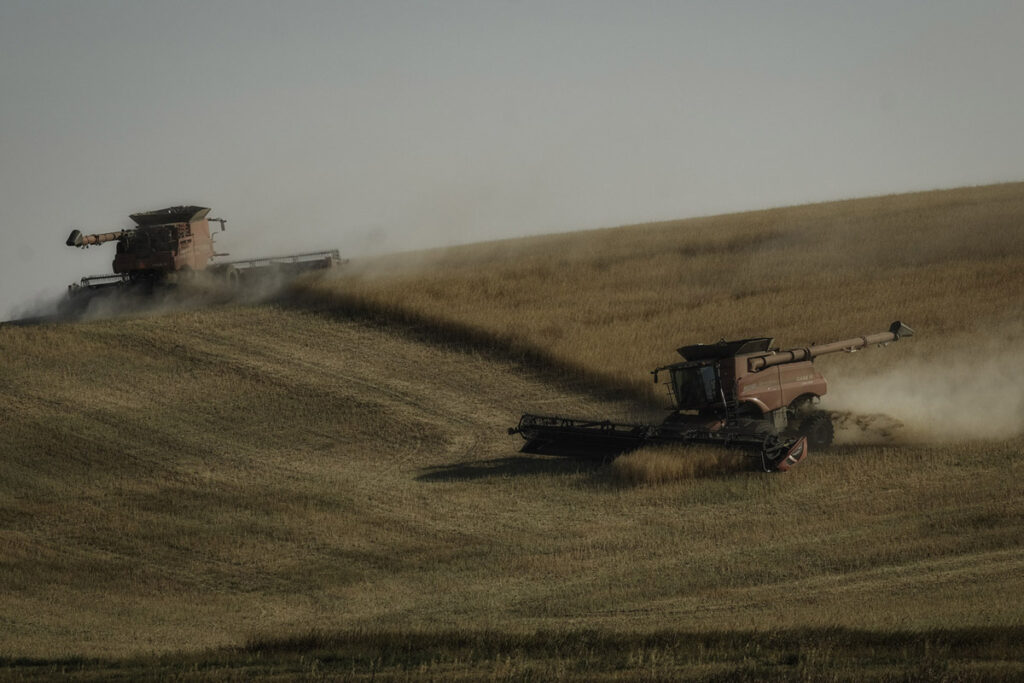

Landscape
The landscape here is incredibly beautiful. It’s a different beauty than a forest or coast scene, much more subtle in its appeal. Because the land is relatively “flat”, from the top of Steptoe Butte, you can see for miles and miles, so much so that you can see the horizon curve off in to the distance. A very wide open and grand landscape it is. You would think that with such a wide open grand landscape that you would get some great photographs with your wide angle lens of the vast expanse of the area. 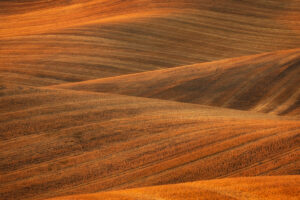 You can get these kinds of shots in the Palouse, however, they only really work when you have an amazing sky above. During the day the ideal is a bright blue sky and white puffy clouds. During the magic hours, like always, we wish for light clouds to light up in the sky. As you probably know, betting on the sky to consistently deliver ideal conditions is a fools folly. More often than not, wide sweeping landscape images just don’t work in the Palouse unless the sky is incredible.
You can get these kinds of shots in the Palouse, however, they only really work when you have an amazing sky above. During the day the ideal is a bright blue sky and white puffy clouds. During the magic hours, like always, we wish for light clouds to light up in the sky. As you probably know, betting on the sky to consistently deliver ideal conditions is a fools folly. More often than not, wide sweeping landscape images just don’t work in the Palouse unless the sky is incredible.
The way to consistently create landscape images in the Palouse is to slap on a long lens and isolate features of the landscape. Because the landscape is so big and distances so vast, my “go-to” lens in the Palouse is the Fujifilm XF100-400mm, often times with a 1.4x teleconverter. This affords me the reach I need to isolate an interesting portion of the landscape to craft a composition. One of my favorite things to do with the Palouse landscape is to compose a photograph using the folds of the land to create an interesting shape or pattern. It is almost a natural abstract type of photograph and is enjoyable in both Spring and Fall times.
One of the big differences between photographing in the Spring and the harvest, is that during harvest time across the landscape, there are more interesting patterns and lines that you can use as compositional elements that aren’t really present during the spring. This makes the creation of a composition even more challenging in the area as there are some very striking design elements that you need to work with when composing a shot.
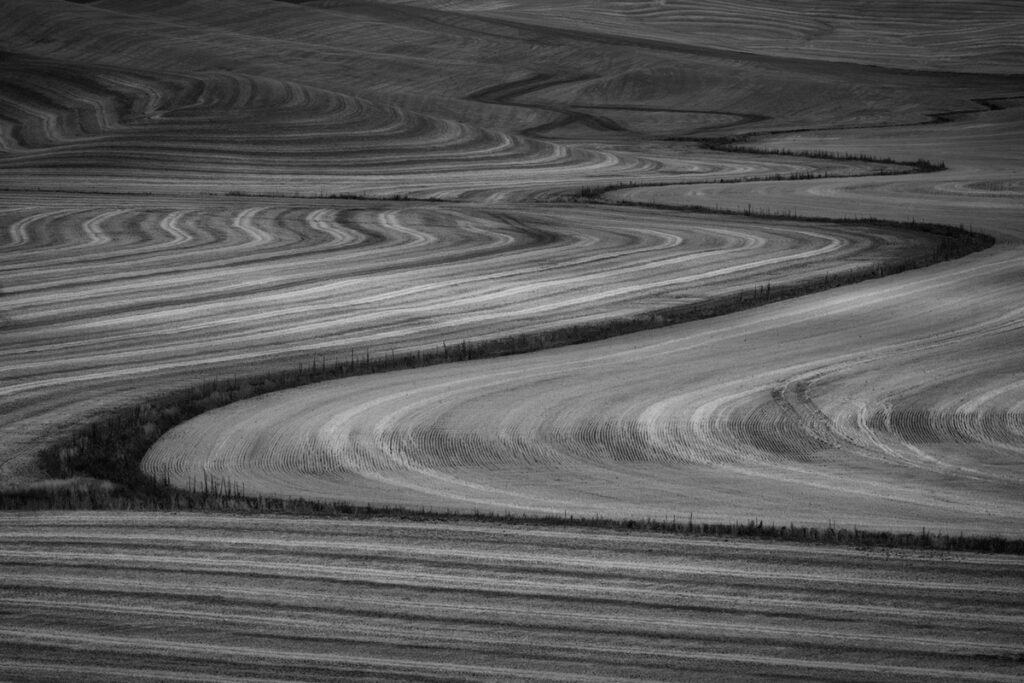
This shot above was taken using my telephoto lens and was composed largely around the lines and curves in the landscape. I used the lines as the main compositional element to compose this shot. Another technique that you can use when you photograph the Palouse Harvest is to use the different tonalities and create some semi-abstract shots. In the below image, I used the two tones and placed them at a specific point in the frame to create a tonal abstract and then was lucky to have the tire tracks running up to create a little bit of visual interest.

Then taking this concept of a “tonal” composition, I took it to the extreme when up on Steptoe Butte before sunset. I used the lines of harvest and the tonal shades of the dirt and wheat to compose the below shot. Where you choose to place the darks/lights, how you want the curves moving through the frame and the angle of the sun and how it hits the top of the ridges….these are all elements that you can put together in to a pleasing composition.
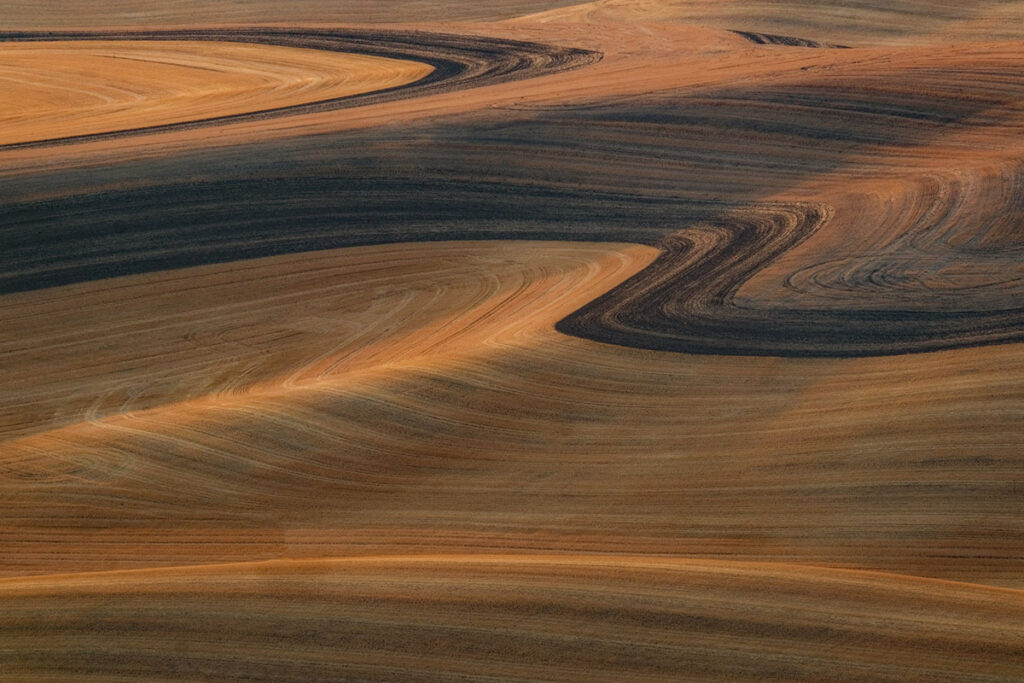
For more traditional landscapes, finding fields of un-harvested wheat when you have a pleasing sky can really tell the story of harvest time in the Palouse.
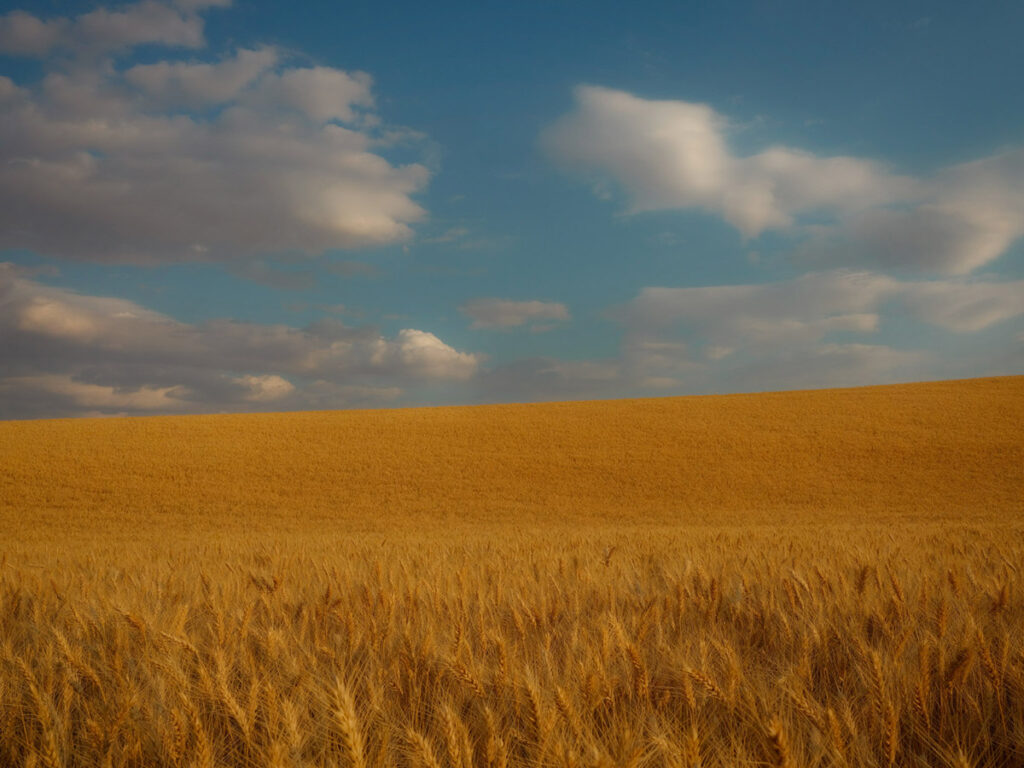
If you come up to photograph the Palouse harvest, you can have a magical time photographing landscape, Americana and people of the area. There is SO MUCH to photograph it’s hard to know where to focus on. Put aside any pre-conceived notions of what you want to photograph or what you typically shoot and then slow down and be in the moment of a rural farming community. Details and stories are plentiful in the area and you should come home with full memory cards! And, don’t forget to consider joining me on a workshop to the area for an insiders experience of the best places to photograph. Also, check out this short VIDEO from my 2021 Harvest workshop

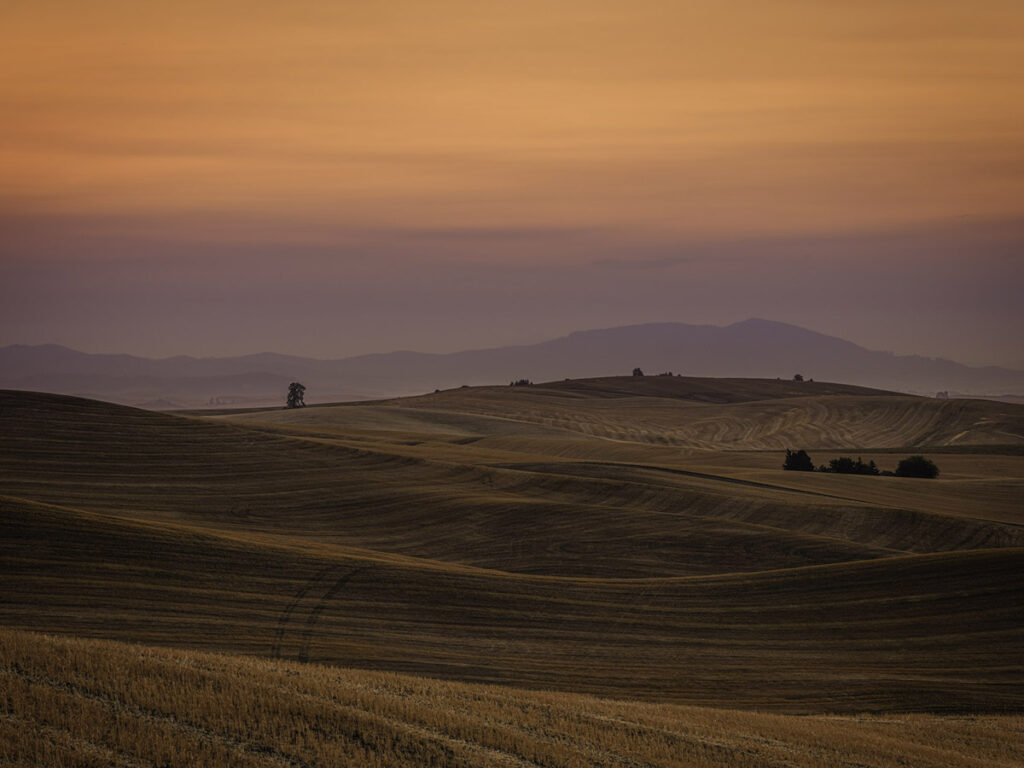
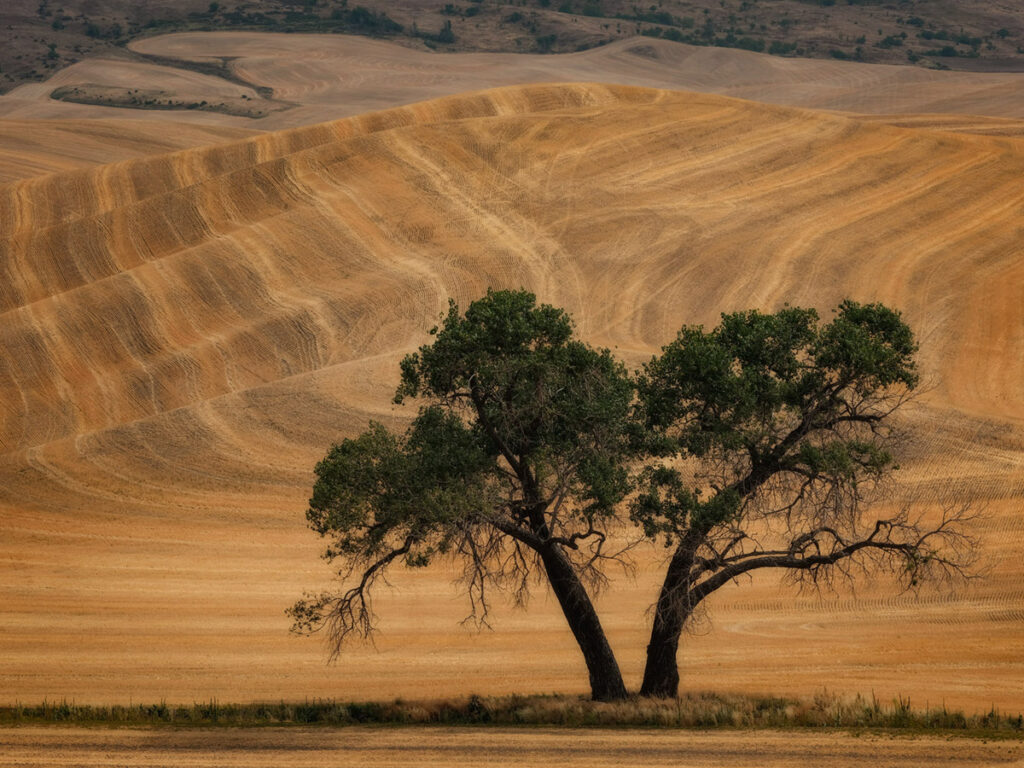
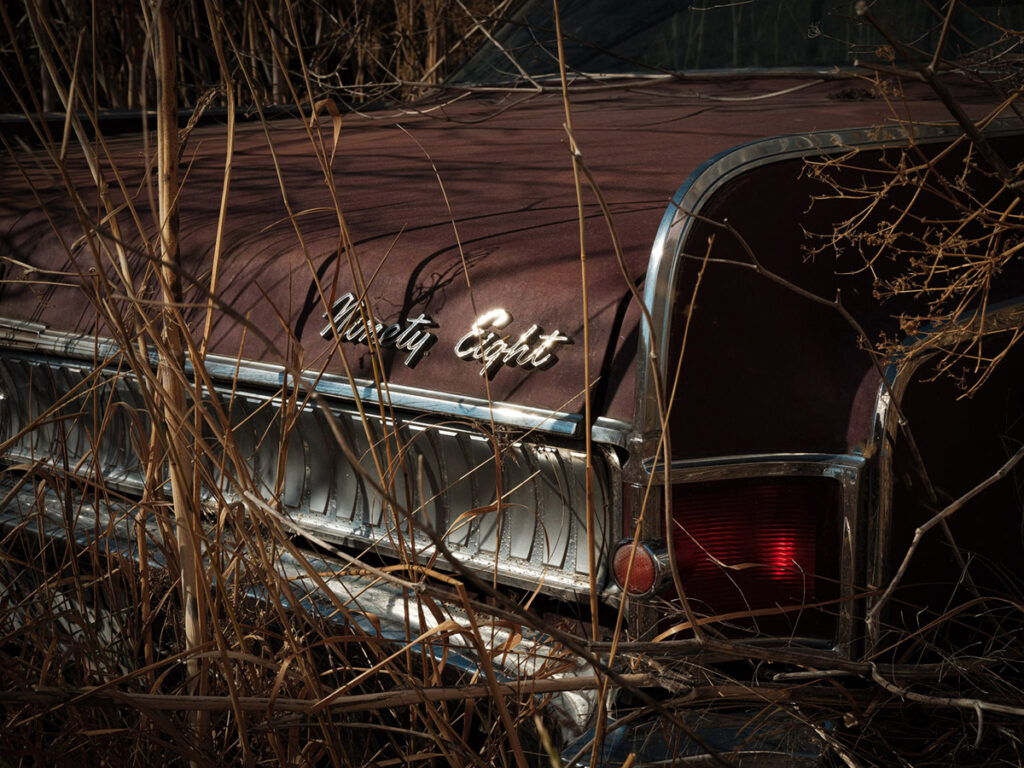
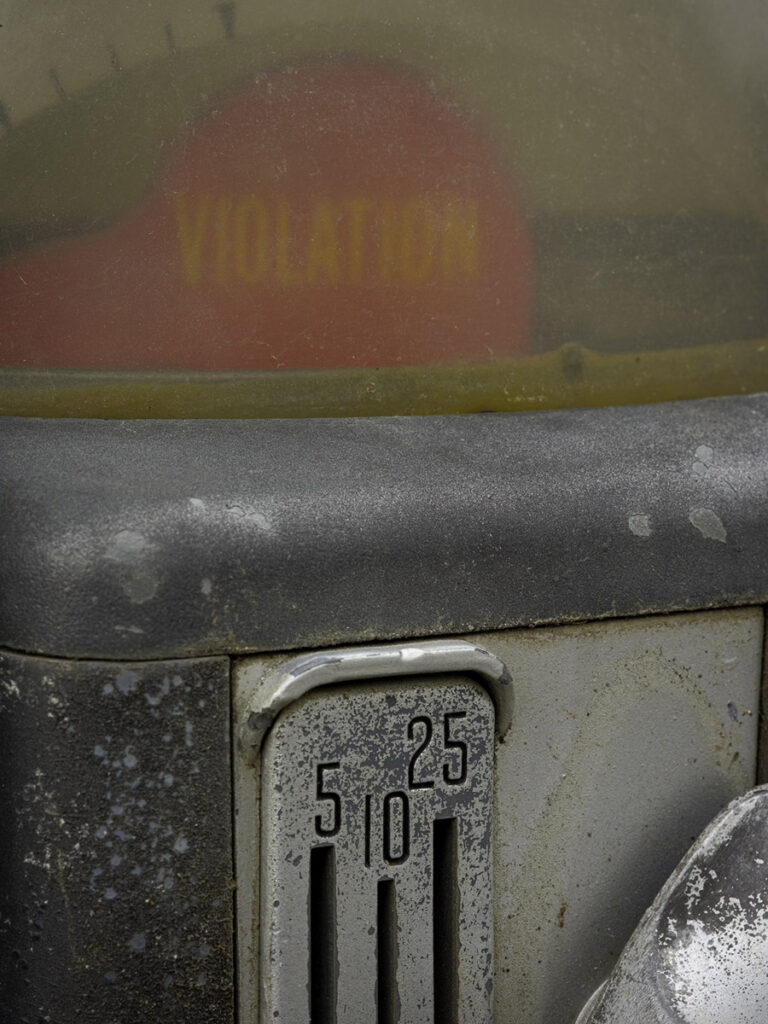
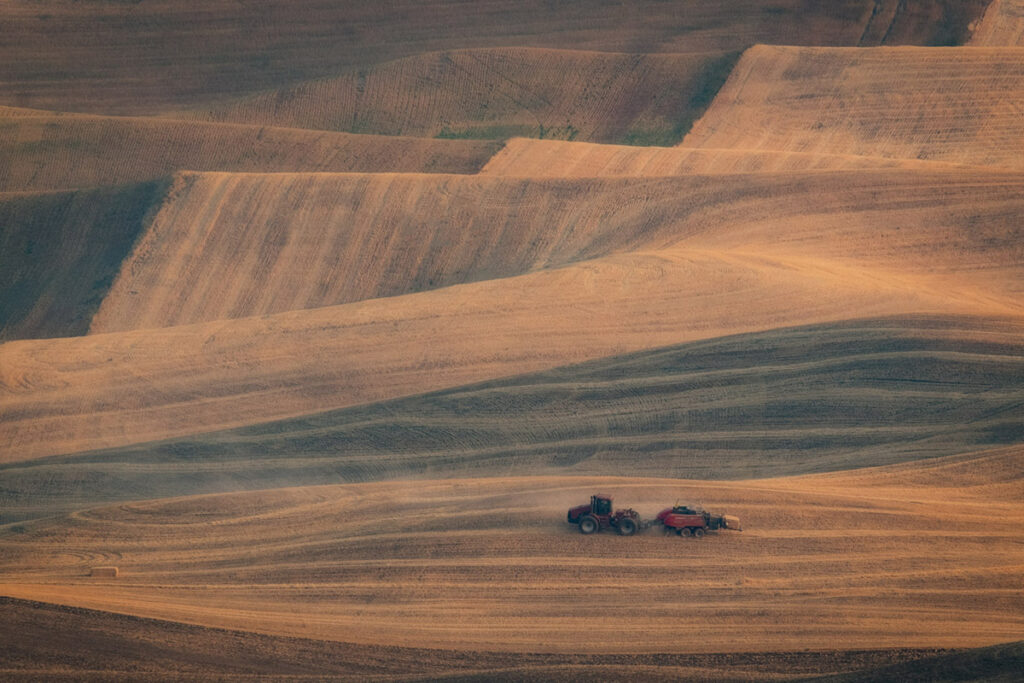


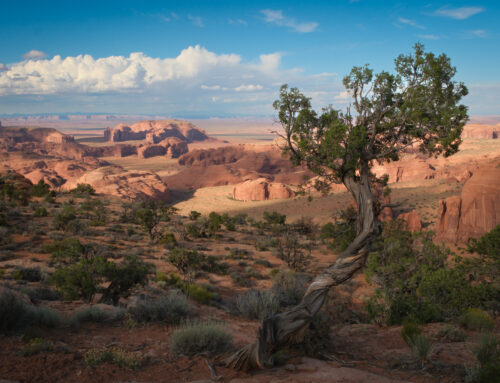
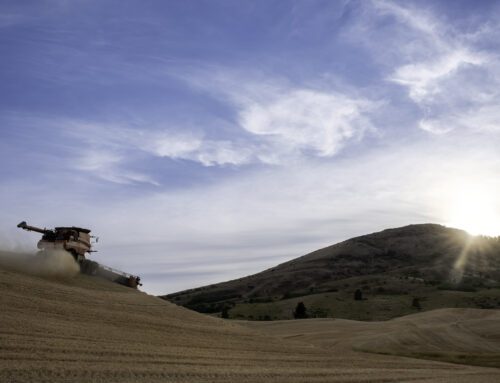
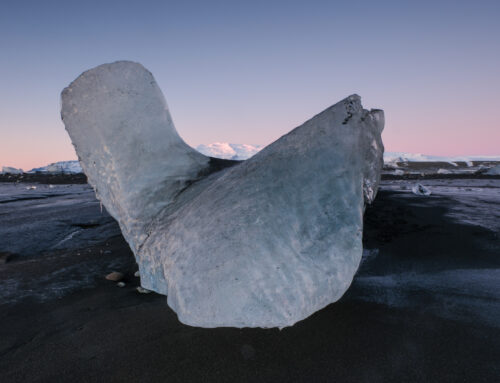
Leave A Comment